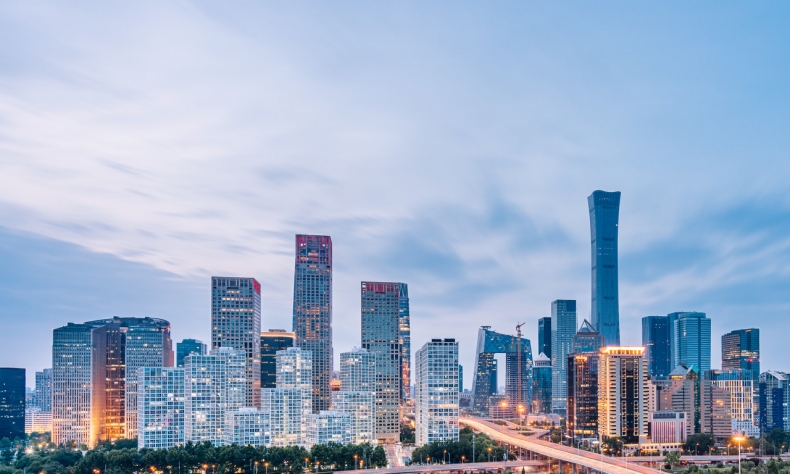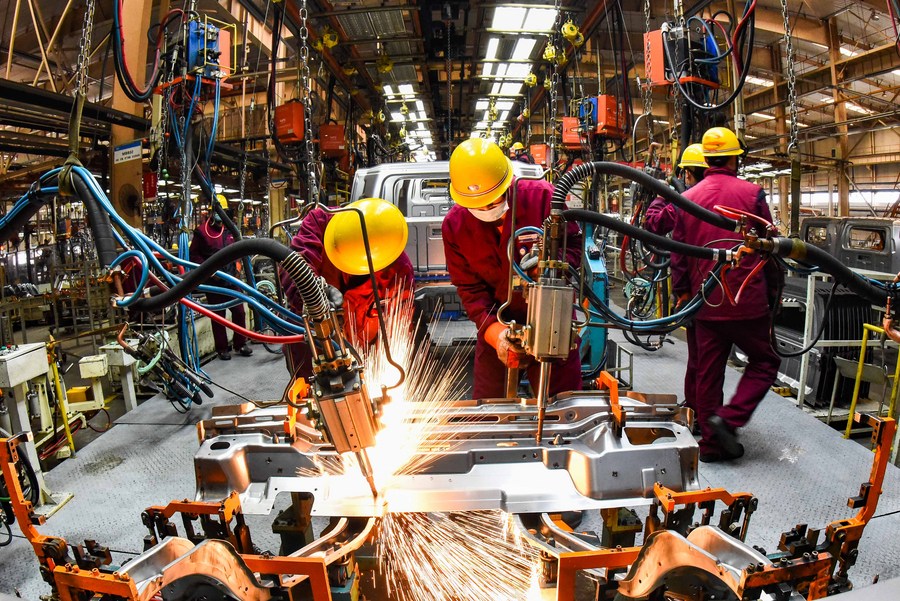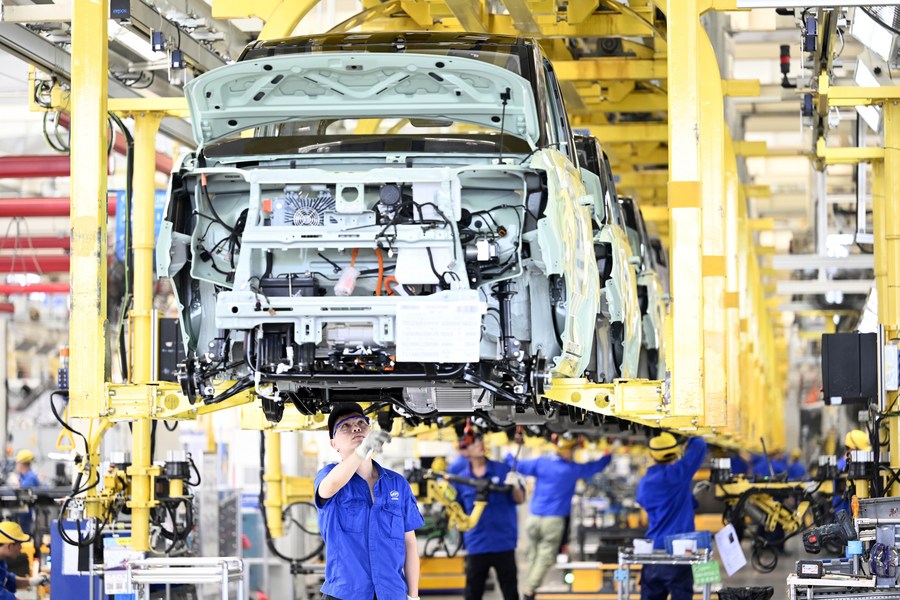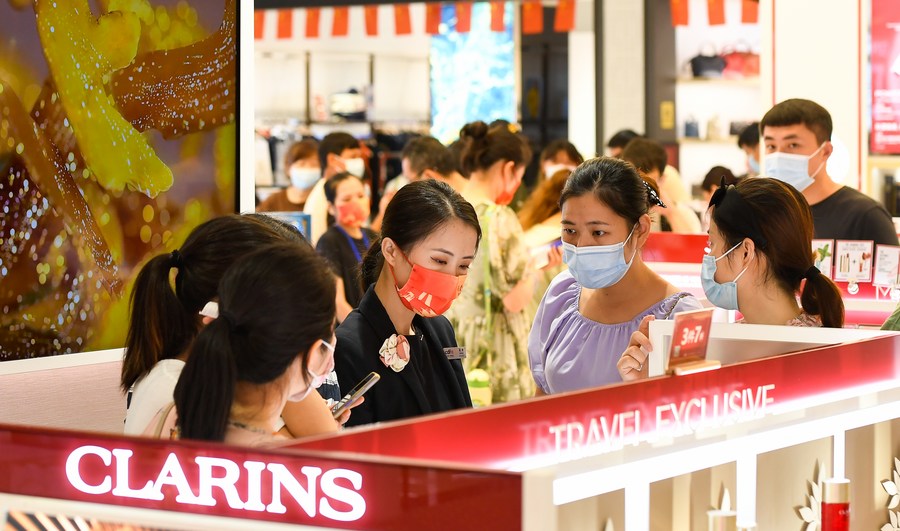Growing With Resilience

China’s economic growth prospects are promising, but do warrant caution.
Despite a number of challenges, including power shortages, the resurgence of COVID-19 cases, floods and rising prices of bulk commodities, China saw higher-than-expected economic growth in the first three quarters of 2021, with improving employment and enhancement of people’s wellbeing, the National Bureau of Statistics (NBS) announced on October 18.
According to NBS data, GDP reached 82.31 trillion yuan ($12.8 trillion) in the January-September period, up 9.8 percent year on year. The figure is above the annual growth target of over 6 percent. In the third quarter (Q3), the economy expanded 4.9 percent, down from 18.3 percent and 7.9 percent in the first and second quarters, respectively.
Though the economic growth over the first three quarters slowed down in comparison with that in the first half (H1) of this year, the two-year average change remained positive. The Chinese economy still shows strong resilience, with the growth of major indicators such as foreign trade and industrial output remaining sound, according to NBS spokesperson Fu Linghui.

In Q3, floods and a COVID-19 resurgence in some regions added to the pressure already on agricultural and industrial production. Rising international energy prices and tight domestic coal supplies also led to further power outages in parts of the country and affected economic activities. In response, Fu said the government has stepped up efforts to address these challenges to ensure supplies and boost economic growth.
“Since uncertainties remain in the external market and the Chinese economy has not yet fully returned to its pre-epidemic level, further efforts are needed to ensure stable growth and drive economic recovery in order for China to achieve its whole-year growth targets,” he said.
Valuable highlights
The agricultural sector maintained a steady growth and continued its industrial restructuring in the first three quarters of the year despite being affected by natural disasters. The value-added industrial output went up 11.8 percent year on year, with the average January-September growth for the past two years standing at 6.4 percent.
The output of the manufacturing industry rose 12.5 percent year on year in the same period, with that of the hi-tech manufacturing sector improving 20.1 percent. The production of new-energy cars, industrial robots and integrated circuits all showed expansion.
The nation’s efforts to drive high-quality and green development have been paying off. According to a report released by the World Intellectual Property Organization (WIPO) in September, China is still the only middle-income economy on the list of the world’s top 30 most innovative economies. WIPO’s Global Innovation Index (GII) 2021 shows that China, ranking 14th last year, rose to 12th place this year.
China’s input in research and development grew 10.2 percent year on year in 2020, according to Fu. Take biomedical innovation for example. Fueled by its remarkable achievements, the output of the pharmaceutical manufacturing industry increased 29.2 percent on a yearly basis in the first three quarters of the year.

China’s setting of its carbon peak and neutrality goals has been driving cleaner production. Its energy consumption per 10,000 yuan ($1,565) of GDP dropped 2.3 percent year on year in January-September, up from 2 percent in H1 this year.
However, the slowdown of production in energy-intensive sectors caused by the power crunch has started to weigh on the manufacturing industry in recent months. In September, the purchasing managers’ index (PMI) for the manufacturing sector came in at 49.6, edging down from 50.1 in August. “The index dropped to below the boom-or-bust threshold of 50 for the first time since the pandemic erupted last year, which suggested economic contraction,” Wen Bin, chief analyst at China Minsheng Bank, told Beijing Review.
Fu said the government has taken measures to enlarge power supply and keep electricity prices stable, adding that the impacts of the power shortage are temporary and have been brought under control. NBS data showed that China’s power generation climbed 4.9 percent year on year in September, 4.7 percentage points faster than the previous month.
Consumption and foreign trade continued to serve as key driving forces. In the first three quarters of the year, the service industry contributed 54.2 percent to the economic growth, up 1.2 percentage points compared with that for the first six months. Retail sales of consumer goods jumped 16.4 percent year on year in the same period, with online retail sales surging 18.5 percent.
Resuming external demand has boosted China’s foreign trade, Wen said. Data from the General Administration of Customs of China showed that China’s total imports and exports improved 22.7 percent year on year to 28.33 trillion yuan ($4.4 trillion) in the first three quarters of the year. It marked an increase of 23.4 percent from the pre-pandemic level in 2019. Still a magnet for international investors, the Chinese mainland saw its paid-in foreign direct investment expand 22.3 percent year on year in the first eight months, according to the Ministry of Commerce.

With measures for improving people’s wellbeing in place, the economic growth delivered further benefits. The surveyed urban unemployment rate stood at 4.9 percent in September, 0.5 percentage point lower than the same period last year. In January-September, China added 10.45 million new urban jobs, achieving 95 percent of the overall annual target. The country’s per-capita residential disposable income stood at 26,265 yuan ($4,085) in the first three quarters of the year, up 10.4 percent from the same period last year in nominal terms. Fiscal expenditure on social public services in sectors such as education and housing continued to increase, Fu said.
The consumer price index, a main gauge of inflation, went up 0.6 percent year on year in the first nine months of the year. The figure was 0.1 percentage point lower than that in H1. According to Dong Lijuan, an NBS statistician, the slower growth was partly driven by a drop in food prices, especially the decline in the prices of pork, a staple meat in China.
The producer price index (PPI), which measures costs for goods at the factory gate, went up 6.7 percent year on year in the first three quarters of the year and the annual growth reached 10.7 percent in September. “The faster expansion of PPI in September was driven by the price hikes in coal and products of some energy-intensive industries. More supporting measures are required to help small and medium-sized enterprises (SMEs) cope with the rising costs of raw materials,” Wen said.

Prudent prospects
The International Monetary Fund projected in October that the global economy would grow 5.9 percent in 2021, while the Chinese economy was expected to grow 8 percent this year, down 0.1 percentage point from July’s forecast. The United States and the eurozone were projected to see an economic growth of 6 percent and 5 percent, respectively.
“The 8-percent projection indicates that the global community is upbeat about the prospects of the Chinese economy, its strong resilience and its great potential,” Fu said.
Although the upward growth prospects of the Chinese economy are encouraging, Wen stressed that key driving forces such as consumption have not yet fully recovered. In the first three quarters of the year, auto sales declined 11.8 percent year on year. The revenue of the tourism industry also stayed below the pre-epidemic level. Slow growth of infrastructure investment, difficulties facing SMEs, and the downtrend in the real estate sector remain to be addressed.
“While adopting proactive fiscal policies to stabilize growth, the government needs to give full play to monetary policies to cope with fluctuations in the international market and impacts of policy adjustments by other major economies to fend off external risks,” Wen concluded.
 Facebook
Facebook
 Twitter
Twitter
 Linkedin
Linkedin
 Google +
Google +










